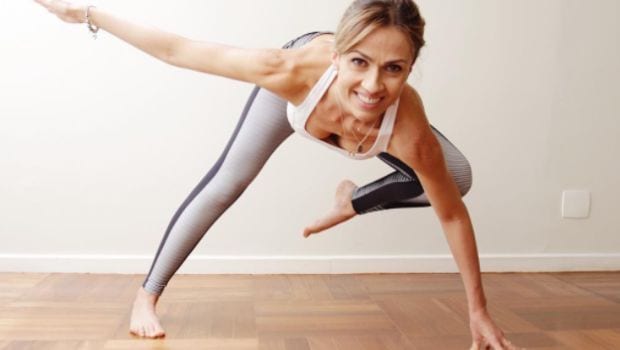Photo Credit: instagram/derose_itaimYou may feel that you need to undertake a strenuous work-out regime to achieve the perfect body, but it's not really so. You just have to do the right kind of exercises which will make all the difference. These exercises could be Isometric Exercises or Isometrics which is a type of strength training routine that is performed without changing the length of the muscles. There are mainly three kinds of muscle exercises which include:1. Concentric - which involves contraction or shortening of muscles.
2. Eccentric - which involves expansion of muscles.
3. Isometric- where the muscles tighten without there being any change in length.
This set of exercises works on the muscles in a static position and demand muscle tension without any actual movement. Most of the core strengthening exercises like yoga postures and pilates exercises are isometric in nature.(Also read: Cardio versus Weightlifting: What's The Best Way to Fet Rid of Fat?) Isometric workout. Photo Credit: instagram/indierunner
Isometric workout. Photo Credit: instagram/indierunner
Isometric exercises can be used to strengthen your entire body and not just a few select parts. They can be practiced within a limited space and are perfect for those who are looking for a change from their typical fitness routine. If you are new to Isometrics, here are few exercises that you can try. 1. Body HoldThis exercise helps stabilize your core while developing core strength. It works on your abdominal muscles. Only a yoga mat is required to perform this exercise.Step 1: Sit on your bottom with your knees bent and feet flat on the floor.
Step 2: Then raise your arms and straighten your legs, creating a “V” shape with your body.
Step 3: Hold this position for 15 seconds.
Step 4: Repeat this 5 times.
 Photo Credit: instagram/internal_force_fitness
Photo Credit: instagram/internal_force_fitness
2. Plank HoldThe plank hold is an effective way to exercise the anterior portion of your body. It works on the abdominal, quadriceps, and the anterior portion of the deltoid (shoulder muscles). Just like the body hold, you only need a yoga mat to perform this exercise.Step 1: Start with your body in a horizontal position with your weight on your toes and forearms.
Step 2: Flex your hips forward with your butt clenched and don’t let your hips sink.
Step 3: Hold this position for 30 seconds. You should feel maximum tension in your shoulders and core.
Step 4: Repeat this 4 times. (Also read: How to Do Burst Training: A High Intensity Workout For Quick Weight Loss) Photo Credit: instagram/amarino90
Photo Credit: instagram/amarino90
3. Forearm PlankForearm Plank is also known as the Dolphin pose in Yoga. It is great for your shoulders, arm muscles, and the core. Step 1: Start in the plank with your body straight and abs tight.
Step 2: Bend your arms and lower your weight on your forearms.
Step 3: Hold the pose for 10 seconds and gradually try to increase the holding time.
Step 4: Repeat this 4 times.
 Photo Credit: instagram/pao_fittime
Photo Credit: instagram/pao_fittime
4. Wall SitA wall-sit may appear to be very simple and easy but it puts a lot of pressure on your thigh muscles and while doing so it helps increase endurance and strength.Step 1: Position yourself in the sitting posture with the support of the wall.
Step 2: Hold the position for 5-7 seconds and then release it.
Step 3: Repeat this 10 times and gradually increase the hold time.
 Photo Credit: Twitter/FIZIOme
Photo Credit: Twitter/FIZIOme
5. Hip Abduction Hip abduction helps strengthen your inner thigh and hip muscles. It is a simple but effective exercise. A pillow is required to perform this exercise.Step 1: Lie down flat on your back.
Step 2: Hold a pillow between your thighs.
Step 3: Press the pillow as hard as possible with the help of your thighs, but make sure you apple pressure from both sides at the same time.
Step 4: Release your thighs without letting the pillow fall. During the course of pressing and releasing, breathing must be evenly controlled.Are Isometric Exercises Better Than Weight Training?Weight training or traditional lifting emphasizes on technique, movement, muscle strength and size. Due to the stress created in the muscles through the stimulation, they adapt and respond by increasing the size of the muscle tissue. The only way a muscle can get bigger is if it is given repeated stimulation. If you stop training, the size of the muscles will decrease. To maintain the size of the muscles, your training routine needs to remain constant. The repeated stimulation and overload can often result in injuries and dislocations. On the other hand, isometric exercises gradually strengthen the muscles and improve their flexibility. Muscle tears and injuries are very rare when it comes to isometrics. It is the best method to develop muscles in a short period of time. But these exercises require a lot of focus and concentration.
 Photo Credit: instagram/ciwa_94kg
Photo Credit: instagram/ciwa_94kg
According to Abhishek Singh, Fitness Expert at Total Fitness in Jangpura, New Delhi, “Isometric exercises are excellent to gain strength and can be done easily at home without using any weights or special equipment. The main plus point about isometric exercises is that you can improve your muscle strength on your own. However, to build muscles, weight training is crucial and that can be only achieved with proper guidance. Both forms of exercises benefit the body and it all depends on the individual and the targets they wish to achieve.”Disclaimer:The opinions expressed within this article are the personal opinions of the author. NDTV is not responsible for the accuracy, completeness, suitability, or validity of any information on this article. All information is provided on an as-is basis. The information, facts or opinions appearing in the article do not reflect the views of NDTV and NDTV does not assume any responsibility or liability for the same.
2. Eccentric - which involves expansion of muscles.
3. Isometric- where the muscles tighten without there being any change in length.
This set of exercises works on the muscles in a static position and demand muscle tension without any actual movement. Most of the core strengthening exercises like yoga postures and pilates exercises are isometric in nature.(Also read: Cardio versus Weightlifting: What's The Best Way to Fet Rid of Fat?)
 Isometric workout. Photo Credit: instagram/indierunner
Isometric workout. Photo Credit: instagram/indierunnerIsometric exercises can be used to strengthen your entire body and not just a few select parts. They can be practiced within a limited space and are perfect for those who are looking for a change from their typical fitness routine. If you are new to Isometrics, here are few exercises that you can try. 1. Body HoldThis exercise helps stabilize your core while developing core strength. It works on your abdominal muscles. Only a yoga mat is required to perform this exercise.Step 1: Sit on your bottom with your knees bent and feet flat on the floor.
Step 2: Then raise your arms and straighten your legs, creating a “V” shape with your body.
Step 3: Hold this position for 15 seconds.
Step 4: Repeat this 5 times.
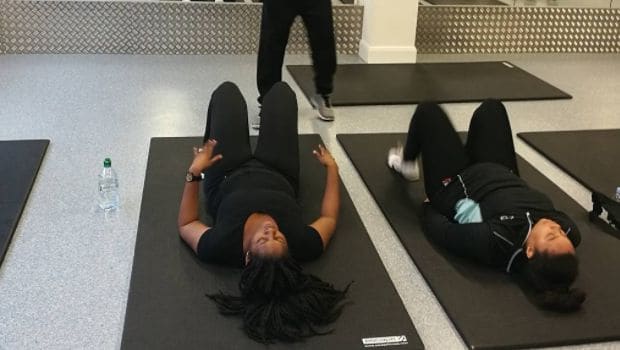 Photo Credit: instagram/internal_force_fitness
Photo Credit: instagram/internal_force_fitnessStep 2: Flex your hips forward with your butt clenched and don’t let your hips sink.
Step 3: Hold this position for 30 seconds. You should feel maximum tension in your shoulders and core.
Step 4: Repeat this 4 times. (Also read: How to Do Burst Training: A High Intensity Workout For Quick Weight Loss)
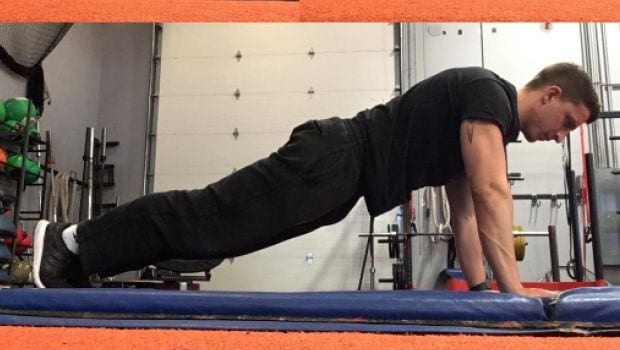 Photo Credit: instagram/amarino90
Photo Credit: instagram/amarino90Step 2: Bend your arms and lower your weight on your forearms.
Step 3: Hold the pose for 10 seconds and gradually try to increase the holding time.
Step 4: Repeat this 4 times.
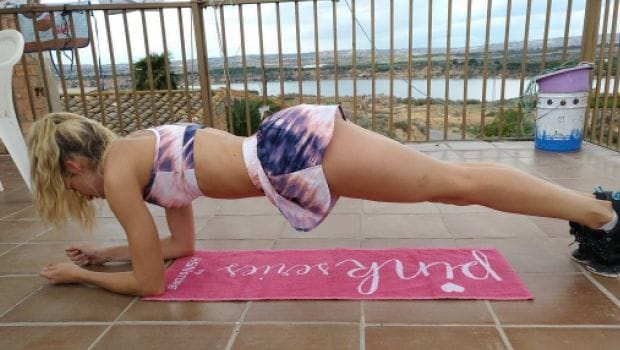 Photo Credit: instagram/pao_fittime
Photo Credit: instagram/pao_fittimeStep 2: Hold the position for 5-7 seconds and then release it.
Step 3: Repeat this 10 times and gradually increase the hold time.
 Photo Credit: Twitter/FIZIOme
Photo Credit: Twitter/FIZIOme5. Hip Abduction Hip abduction helps strengthen your inner thigh and hip muscles. It is a simple but effective exercise. A pillow is required to perform this exercise.Step 1: Lie down flat on your back.
Step 2: Hold a pillow between your thighs.
Step 3: Press the pillow as hard as possible with the help of your thighs, but make sure you apple pressure from both sides at the same time.
Step 4: Release your thighs without letting the pillow fall. During the course of pressing and releasing, breathing must be evenly controlled.Are Isometric Exercises Better Than Weight Training?Weight training or traditional lifting emphasizes on technique, movement, muscle strength and size. Due to the stress created in the muscles through the stimulation, they adapt and respond by increasing the size of the muscle tissue. The only way a muscle can get bigger is if it is given repeated stimulation. If you stop training, the size of the muscles will decrease. To maintain the size of the muscles, your training routine needs to remain constant. The repeated stimulation and overload can often result in injuries and dislocations. On the other hand, isometric exercises gradually strengthen the muscles and improve their flexibility. Muscle tears and injuries are very rare when it comes to isometrics. It is the best method to develop muscles in a short period of time. But these exercises require a lot of focus and concentration.
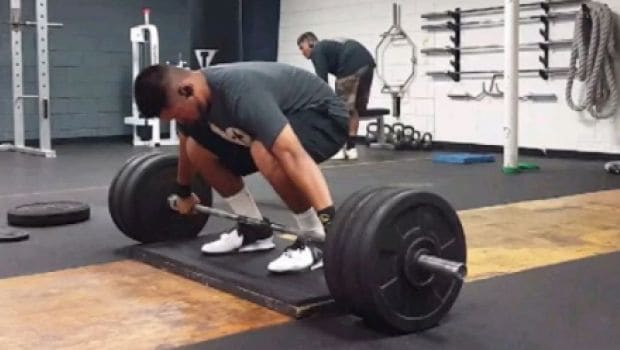 Photo Credit: instagram/ciwa_94kg
Photo Credit: instagram/ciwa_94kgAdvertisement









